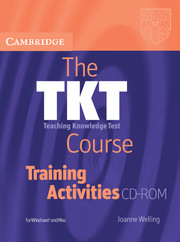3.2 - Is that really appropriate?
Published online by Cambridge University Press: 09 February 2024
Summary
In Module 3, when exponents are revisited in a classroom context, the term appropriacy broadens in scope beyond register (formality or informality of exponents) to include the ideas of grading language and sequencing instructions, as well as sensitivity to age and culture.
Instructions
1. Spend two to three minutes leading the development of a mind map on the board to introduce the topic. Write the words APPROPRIACY OF TEACHERS’ LANGUAGE in the middle and elicit what factors affect a trainee's choice of language in the classroom, prompting where necessary. Include some of the following list, but don't worry about mentioning all factors at this stage.
Students’ language level
The need to sequence instructions
Sensitivity to age and maturity
Culture
Clarity and precision of instructions
2. Divide the class into pairs. Display the worksheet and explain that the left-hand column shows the context and the right-hand one shows the teachers’ language.
3. Explain that only three of the ten examples illustrate appropriate teachers’ language. Ask the trainees to identify the three appropriate examples. For the other examples, the trainees should decide why they are inappropriate and rephrase them to make them appropriate. Hand out one worksheet per pair.
4. Monitor, answering vocabulary questions and ensuring that trainees are focusing on the teaching situation described in the left-hand column.
5. Have each pair compare answers with another pair.
6. Conduct feedback. Elicit any further factors trainees have noticed from the worksheet to complete the mind map.
- Type
- Chapter
- Information
- The TKT Course Training Activities , pp. 70 - 71Publisher: Cambridge University PressFirst published in: 2024

